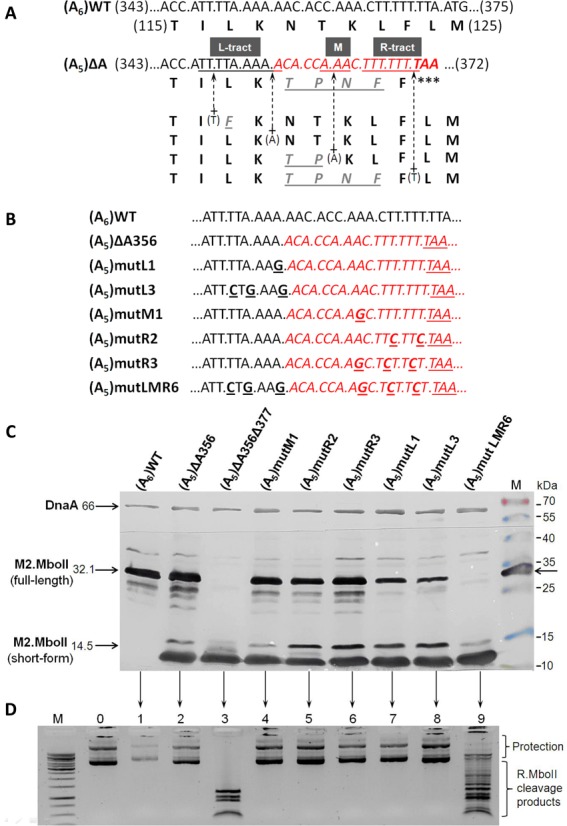Figure 2.

Elimination of transcriptional slippage by systematic discontinuity of T/A homopolymeric tracts in the 346–375 nt region of the mboIIM2ΔA356 gene. (A) Four of the simplest ways to restore a A356 deletion by single nucleotide insertion (plus arrow) through a transcriptional slippage mechanism and their influence on amino acid sequence changes (underlined). The T/A homopolymer runs (underlined) are named L-tract, M and R-tract, respectively. (B). A set of site-specific mutagenized mboIIM2ΔA356 genes with interrupted poly(T + A) tracts. Short names are used (see Supplementary Table S1). (C) Immunodetection of M2.MboII in total protein extracts from cultures harboring plasmids with various replacement mutations of the mboIIM2ΔA356 gene. Bacterial lysates were run on Tricine-SDS–12.5% PAGE, western blotted and immunodetected against M2.MboII protein. DnaA protein was used as an internal marker. M—molecular size markers (Fermentas) including the M2.MboII protein. (D) The relative level of plasmid methylation by the individual M2.MboII mutated variant. Plasmid DNA was digested with R.MboII, resolved by 0.8% agarose gel electrophoresis and visualized with ethidium bromide. Lanes 1–9 correspond to the variants from panel (C). M—molecular weight marker 1 kb (Fermentas). 0—undigested pET-(A5)LMR6 plasmid. Inverted image of the gel is shown.
